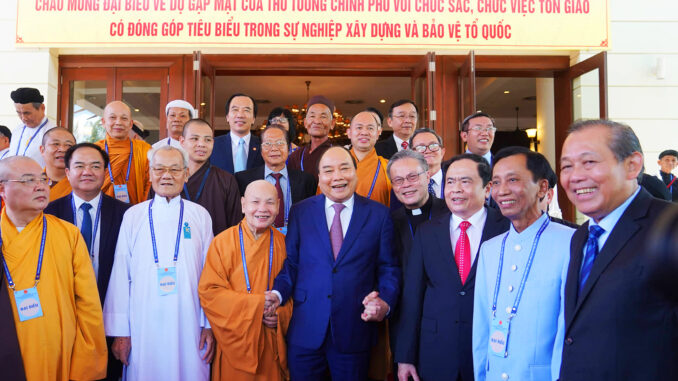
Vietnam religion is a special thing to mention when it comes to this country. Vietnamese people have their own long-standing tradition of practicing religious beliefs and customs.
Vietnam religion is characterized by its diversity, with several recognized religions and religious organizations.
According to statistics, as of 2020, there are 16 official religions in Vietnam, with 36 religious organizations in many Vietnam locations. Among them, there are 6 major religions in Vietnam, namely Buddhism, Catholicism, Protestantism, Islam, Cao Dai, and Hoa Hao. There are 25,000 places of worship across the country.
1. Buddhism - the dominant religion in Vietnam
Buddhism, the most common religion in Vietnam, was introduced to the country in the early years of the Common Era and underwent significant growth from the 10th to 15th century.
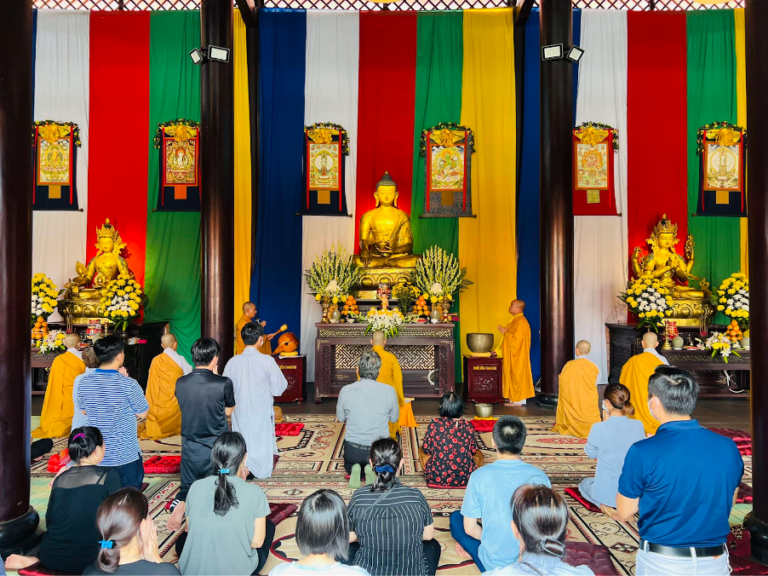
During the Ly – Tran Dynasties (from the 11th to 14th century), Buddhism experienced a period of prosperity. In this period, King Tran Nhan Tong founded the Truc Lam Yen Tu Zen sect. Mahayana Buddhism is widely practiced in Vietnam, while Theravada Buddhism is more common in neighboring countries such as Cambodia and Laos.
As the main religion on the Vietnam religion map, there are over 11 million Buddhist followers, more than 17,000 pagodas, and four Buddhist academies in Vietnam. The official Buddhist organization in Vietnam is Vietnam Buddhist Sangha.
Some well-known Pagodas in Vietnam:
- Tran Quoc Pagoda in Hanoi is a historic Buddhist temple on an islet in West Lake. It was built in the 6th century and hangs on through the ups and downs of history. The temple, with stunning views of West Lake, is an ideal place for meditation and learning about Vietnamese Buddhist culture.
- Thien Mu Pagoda in Hue is a famous Buddhist site with stunning architectural styles. The prominent features in this pagoda are a seven-story tower and many magnificent Buddha statues, along with breathtaking views of Perfume River and surrounding mountains.
- Bai Dinh Pagoda in Ninh Bình is the largest pagoda in Vietnam with a complex of many temples and shrines, covering an area of over 500 hectares. The pagoda is famous for its massive bronze Buddha statue, which is the largest in Vietnam.
- Tam Chúc Pagoda is a newly built pagoda located in Hà Nam Province, about 100 km from Hanoi. It is one of the largest pagodas in Vietnam, and is known for its beautiful scenery and impressive architecture.
- Vam Ray Pagoda in Tra Vinh is the largest Khmer pagoda in Vietnam, built in 2004. The pagoda has the typical architecture of Khmer Buddhism, with curved roof tiles and exquisite carvings. Inside the pagoda there are many large and small Buddha statues, decorated with gold leaf.
2. Catholicism
Catholicism came to Vietnam religion during the latter half of the 16th century. Catholic missionaries from Portugal, Spain, and France, following merchant ships, brought Catholicism to Vietnam.
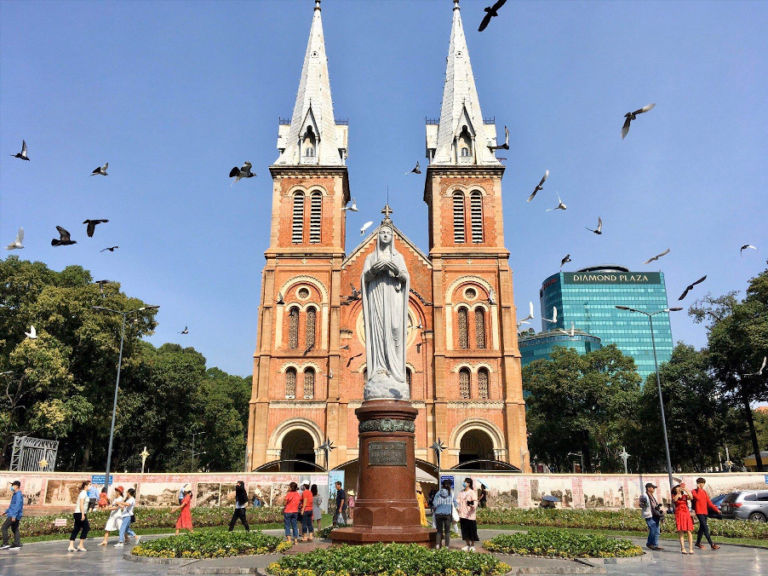
During the 17th century, Jesuit missionaries, with Alexandre de Rhodes being the most famous person, developed an alphabetic system for the Vietnamese language based on the Latin script. This writing system is still used nationally today.
In the 1960s, when South Vietnamese President Ngo Dinh Diem, a Catholic, was in power, there was a significant shift in Vietnam religion. Catholicism was the dominant religion in Vietnam over Buddhism then.
Presently, there are approximately 6.5 million followers of Catholicism in Vietnam religion, with 42 bishops, around 4,000 priests, more than 100 religious orders, institutes, and congregations comprising over 17,000 members. The official Catholic organization in Vietnam is the Catholic Church in Vietnam.
Some well-known cathedrals in Vietnam:
- Nha Trang Cathedral in Nha Trang, also known as Christ the King Cathedral, is a renowned religious site in Vietnam with a unique Gothic architectural style. Visitors can admire the beauty of the cathedral’s architecture and enjoy the peaceful atmosphere inside. It is recommended to attend a mass here to fully experience the spiritual ambiance of the site.
- Da Nang Cathedral in Da Nang, or Pink Church, is a well-known Catholic church in Vietnam. Its distinctive pink exterior, Gothic architecture, and stained-glass windows have attracted many visitors. The church hosts daily masses in English and Vietnamese, and visitors are welcome to attend.
- The Notre Dame Cathedral of Saigon is one of the most iconic landmarks in Ho Chi Minh City. It was built in the late 19th century and is considered to be one of the finest examples of neo-Romanesque architecture in Southeast Asia. The cathedral is known for its twin towers, red brick façade, and stained glass windows.
- St. Joseph’s Cathedral in Hanoi is the oldest cathedral in Vietnam. It was built in the late 19th century and is designed in the Gothic Revival style. The cathedral is known for its tall spires, rose windows, and stained glass windows.
3. Protestantism
The Christian and Missionary Alliance introduced Protestantism to Vietnam during the late 19th and early 20th centuries. Currently, there are approximately 1.5 million Protestant believers in Vietnam religion.
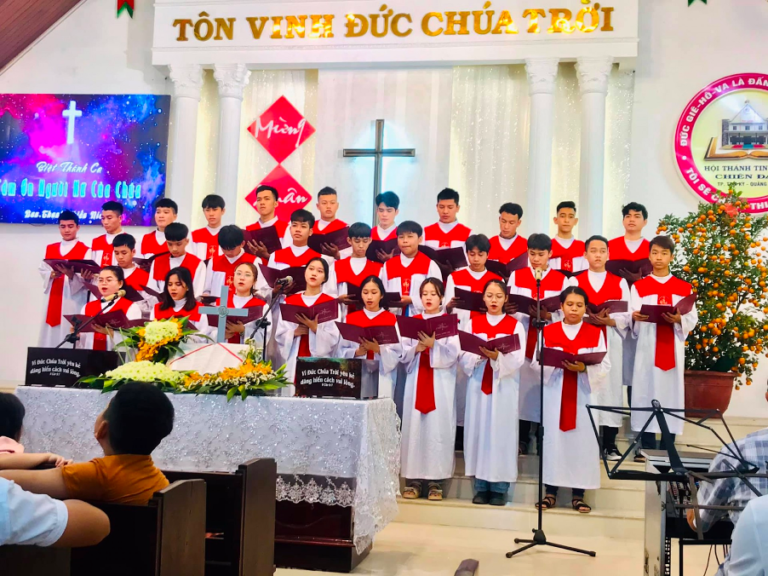
In addition, there are around 3,000 pastors, nearly 400 places of worship, one seminary, and one biblical school. Most of the Protestants in Vietnam are ethnic minorities residing in the northwestern highlands, such as the Hmong, Thai, and Dao.
There are two officially Protestant organizations in Vietnam, which are the Evangelical Church of Vietnam (South) and the Evangelical Church of Vietnam (North).
4. Islam
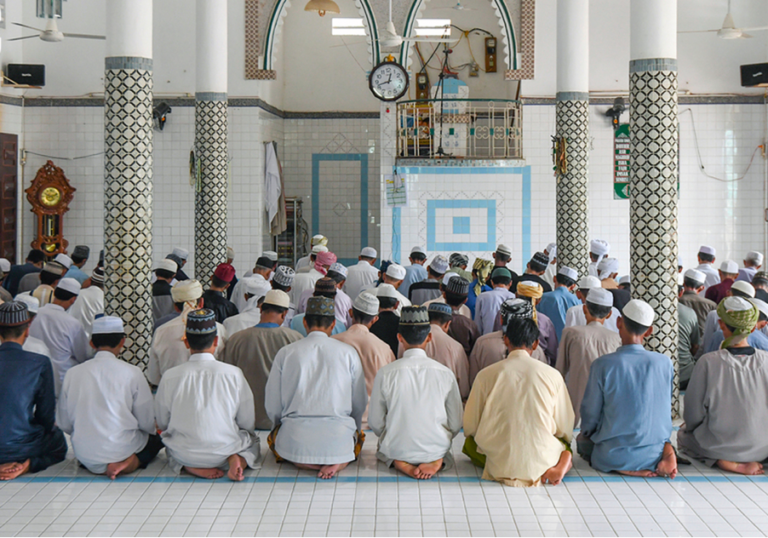
There are some interesting Vietnam religion facts about Islam in Vietnam. The majority of Islam believers are the Cham people. There are two groups of Cham people who follow Islam: one group in Ninh Thuan and Binh Thuan, known as Cham Bani, and another group in Chau Doc, Ho Chi Minh City, Tay Ninh, and Dong Nai, known as Cham Islam. Currently, there are over 80,000 Muslim believers in Vietnam, with 89 places of worship. In Vietnam, there are 7 recognized Islamic organizations.
Some well-known Cham Mosque in Vietnam:
- Mubarak Mosque in An Giang was built in 1750, this is the oldest and most famous Cham mosque in Vietnam. It is a national heritage site and is known for its unique architecture, which blends Islamic influences with Cham culture.
- Masjid Al Ehsan Mosque in An Giang was built in 1937, this mosque is located in a Cham village and is known for its beautiful gardens and peaceful atmosphere. It is a popular tourist destination and is also a place of worship for the local Cham community.
- Kahramanlar Rahmet Mosque in An Giang was opened in 2017, this is the largest mosque in Vietnam. It is located on a hilltop and offers stunning views of the surrounding countryside. The mosque is a symbol of the Cham people’s strong Islamic faith and their contributions to Vietnamese society.
- Jamiyah Islamic Mosque in Ho Chi Minh city is one of the oldest in Ho Chi Minh City and is known for its active community. It is a popular place for Muslims from all over the city to come together to pray and celebrate their faith.
5. Cao Dai
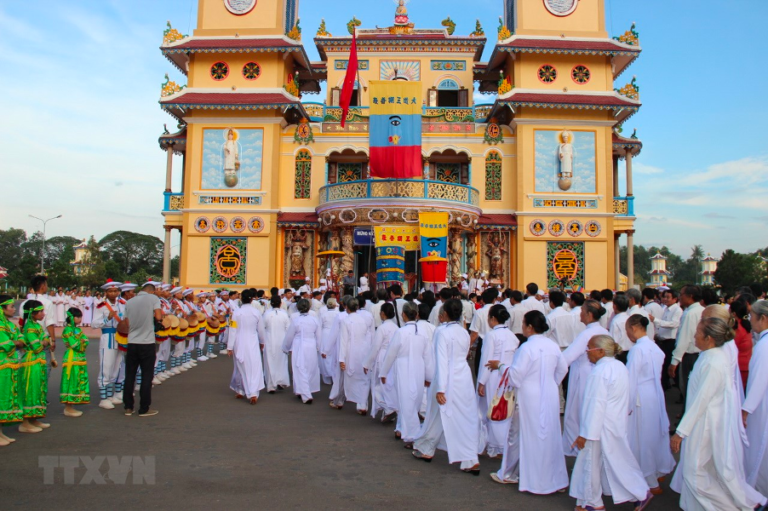
The name “Cao Đài,” which mean “high palace” or “supreme throne.” This refers to the belief in a single supreme God who reigns over the universe. Caodaism became a part of Vietnam religion in 1926. It combines teachings from various beliefs. The religion used to be banned by the government but was allowed to operate later. Now, Caodaism has around 6 million followers and 7 recognized Cao Dai organizations.
Some well-known Cao Dai Temples in Vietnam:
- Tay Ninh Holy See (Cao Dai Temple) in Tay Ninh Province: This is the largest and most famous Cao Dai temple in Vietnam. It is known for its unique architecture and colorful interior.
- Saigon Cao Dai Temple in Ho Chi Minh City: This temple is the largest Cao Dai temple in Ho Chi Minh City. It is known for its beautiful stained glass windows and its collection of religious artifacts.
- Cao Dai Temple in Da Nang: This temple is located in the center of Da Nang City and is known for its colorful exterior and its large statue of the Supreme Being.
- Cao Dai Temple in Phu Quoc: This temple is located on the island of Phu Quoc and is known for its beautiful beachfront location and its tranquil atmosphere.
6. Hoa Hao
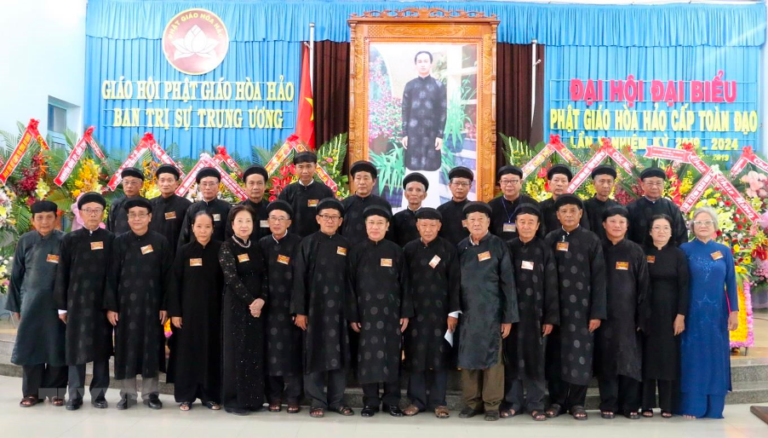
Hoahaoism is a reformed Buddhist sect founded by Huynh Phu So in 1939 in An Giang province. It emphasizes the practice of Buddhism at home by laypeople, and has approximately 1.3 million followers with 94 temples in 20 provinces. Followers use a plain brown cloth at home as an altar and pray using flowers, fresh water, and incense. The official Hoa Hao organization is Hoa Hao Buddhist Church.
We would be pleasure to have you visit and take in our breathtaking scenery, unwind on our white sandy beaches, immerse yourself in our exquisite culture, and get to know the people of the friendliest nation. Especially, to savor our delicious food at restaurants with Michelin ratings or to come and participate in our incredible mega-events involving culture, music, sports, and tourism!
Make your plan to Vietnam right now by obtaining a Vietnam visa at https://www.vietnam-evisa.org. We, a reputable and reliable Visa service, will assist you turn your plan into reality at the very first step.